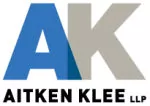The Applicants, Times Group Corporation and Times Developments Inc. (Times), operate in property development and management in the Greater Toronto Area. Times uses the trade names "Times Group Corporation" and "Time Developments Inc." and has a registered trade-mark for "Times Group Corporation". The respondents, Time Development Group Inc. and Time Development Inc. (TDG) operates in the same industry and geographical area. TDG uses the trade name "Time Development Group". Times sought a declaration that TDG infringed its mark and an order that TDG cease doing so.
The central issue was whether TDG's use of "Time Development Group" was likely to lead to confusion. The test for confusion is to consider the first impression of the somewhat hurried, casual consumer who has an imperfect recollection of the marks or names in issue. One then asks whether that hypothetical person would, without giving the matter detailed consideration, likely think that the goods associated with those marks have a common source. If so, confusion has been made out.
Justice O'Reilly considered this test while reviewing the factors set out in subsection 6(5) of the Trade-marks Act:
Degree of Resemblance: The Court noted that this was the most important factor and that there was "obviously a strong degree of resemblance" between the marks. The dominant words at issue were "Times" and "Time", which were nearly identical. The other words ("development", "group", and "corporation") were ordinary words and not being used to distinguish the trade names from others in the same field. The Court held that it was irrelevant that the parties' logos were easily distinguishable. A trade-mark consisting of words excludes others from using confusingly-similar words in any form. One must look at the words themselves, not their get-up, in assessing resemblance.
Distinctiveness: The Court held that "Time" and "Times" are common words that lack inherent distinctiveness, thus augmenting the possibility of confusion. However, ordinary descriptors such as these generally attract a low level of legal protection.
Duration of Use: The evidence demonstrated that Times' use of its mark pre-dated TDG's use of its trade-name. However, Times only used its mark since 2006 (two years before TDG) and the Court did not find this long enough to acquire distinctiveness through prolonged use in the market.
Nature of the Business: The parties operate similar businesses in the same geographic area and target the same clients. TDG argued that clients purchasing expensive residential properties would take care to ensure they knew from whom they would be buying. The Court held that that is not the test for confusion. Even for expensive goods, the question remains whether the somewhat rushed, casual consumer's first impression would likely cause him/her to conclude that the goods had a common source. The critical issue is the first impression, whereas whether buyers conduct subsequent research is not relevant.
Other circumstances: The applicant uses "Time" whereas the respondent uses the plural "Times". However, both parties target Chinese Canadian customers and the evidence demonstrated that this distinction disappears when the words were translated into Chinese characters. Thus, the risk of confusion increased in the parties' target markets. In addition, the Court noted that "the parties themselves are confused" because both referred to the other's trade names incorrectly in their respective memoranda, seemingly demonstrating a difficulty to distinguish between similar names of this type.
The Court ultimately found that there was a likelihood of confusion and granted judgment in the applicant's favour.
A copy of the judgment can be found here.
The content of this article is intended to provide a general guide to the subject matter. Specialist advice should be sought about your specific circumstances.

